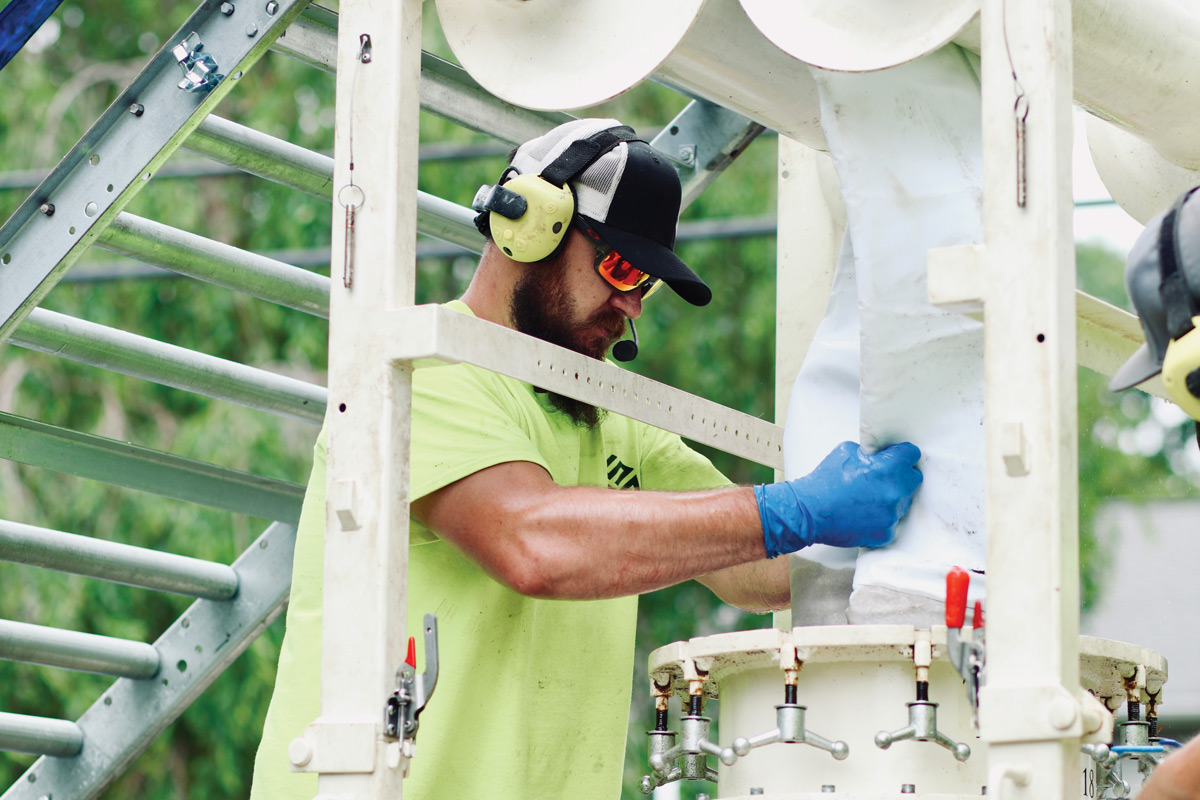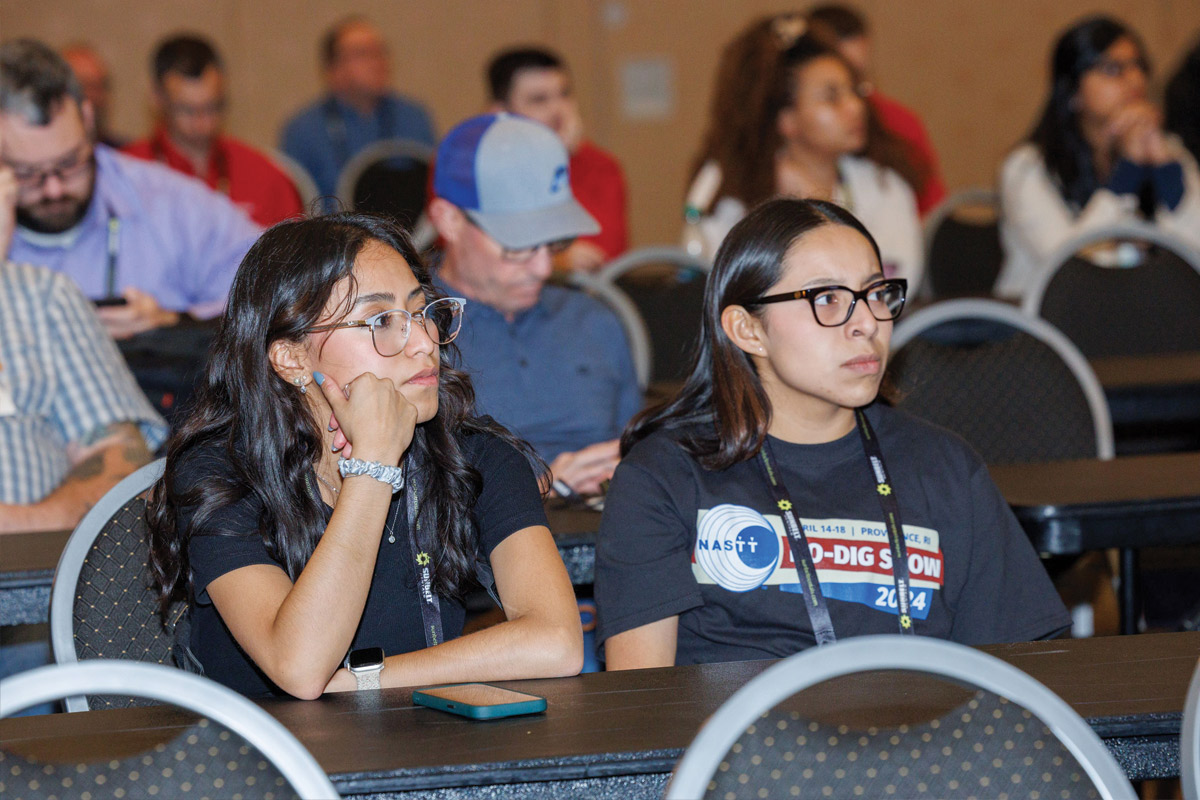
10 Cities Tapping Into Trenchless
 The use of trenchless technologies across North America has grown considerably since the 1992 No-Dig Show in Washington D.C. where our publisher Bernie Krzys first shopped the idea of creating a magazine dedicated solely to trenchless construction. In August of that year we published our first issue.
The use of trenchless technologies across North America has grown considerably since the 1992 No-Dig Show in Washington D.C. where our publisher Bernie Krzys first shopped the idea of creating a magazine dedicated solely to trenchless construction. In August of that year we published our first issue.In 2017, in honor of our silver anniversary, the Trenchless Technology editorial team is releasing monthly lists of fun trenchless-related topics. This month editor Jim Rush, managing editor Sharon Bueno and associate editors Andrew Farr and Mike Kezdi sat down to look at some of the cities that have played an important role in the growth of the industry.
ICYMI, we’ve covered:
Bernie Krzys’ Top 15 Trenchless Travels
8 Great Trenchless Mascots
Enjoy the fourth installment of our Trenchless Technology lists, marking our 25th anniversary. For our May list – publishing May 26 – we will highlight some of our favorite stories – and there are lot of great stories to remember.
As for this list, we realize this is not a complete list and there are many cities out there driving the growth of trenchless. If you have some thoughts on this subject don’t hesitate to email Mike Kezdi, associate editor, at mkezdi@benjaminmedia.com. Or you can tweet your suggestions at us using the hashtag #TT25th.
Brecksville, Ohio
 OK, we admit that Brecksville likely does not have a huge fund dedicated to trenchless work. Heck, we’re not even sure the city has completed trenchless projects on its own. BUT what is important is that this picturesque hamlet, with a population of approximately 13,440, is home to Benjamin Media Inc. That’s right, we put Brecksville on the list because it is home to Trenchless Technology — the No. 1 source for trenchless news since 1992.
OK, we admit that Brecksville likely does not have a huge fund dedicated to trenchless work. Heck, we’re not even sure the city has completed trenchless projects on its own. BUT what is important is that this picturesque hamlet, with a population of approximately 13,440, is home to Benjamin Media Inc. That’s right, we put Brecksville on the list because it is home to Trenchless Technology — the No. 1 source for trenchless news since 1992.Nashville, Tenn.
When it comes to trenchless, Nashville is a pioneer in the realm of comprehensive rehab approach addressing manholes and laterals when tackling adjacent mainline work. Additionally, the city – a cultural hub of the south – has been a gracious host to several NASTT No-Dig Shows and several other trenchless-related conferences and expos.
Los Angeles, California
 In 2011, the City of Los Angeles completed its 1 millionth foot of sewer constructed or rehabilitated using trenchless technologies. We’d have to believe this number has only grown in the last six years. It also helps that the region is home to many noted trenchless advocates, as well as 2010 Trenchless Technology Person of the Year Keith Hanks who helped promote the growth of trenchless in the region.
In 2011, the City of Los Angeles completed its 1 millionth foot of sewer constructed or rehabilitated using trenchless technologies. We’d have to believe this number has only grown in the last six years. It also helps that the region is home to many noted trenchless advocates, as well as 2010 Trenchless Technology Person of the Year Keith Hanks who helped promote the growth of trenchless in the region.Houston, Texas

When looking at early adopters of trenchless methods, Houston shines for embracing microtunneling. Houston was home to one of the largest and earliest microtunneling programs in the United States. And in the last decade, two projects, the Lake Houston HDD project (2012) and the Houston Ship Channel HDD project (2015) took home the prestigious Trenchless Technology Project of the Year Award for New Installation.

Since completing its large CSO program in 2011, pipe bursting has been a big part of Portland BES’ trenchless programs to address aging sewer mains and laterals.
Portland, Oregon
As one of the largest cities in the Northwestern United States, Portland, Ore., is known for being green, and that’s not just referring to the landscape of the surrounding area. Portland’s environmentally-conscious mentality has also carried over to its underground infrastructure initiatives. In 2011, Portland’s Bureau of Environmental Services (BES) completed a 20-year program to update its sewer system and reduce combined sewer overflows (CSOs) into the Willamette River and Columbia Slough. Since completing the CSO program in 2011, the BES has turned its attention to rehabilitation programs to address those sewer mains and laterals lines that are aging and in need of replacement. And at 3,000 lf, the microtunneled portion of the East Side CSO Tunnel Project still holds the record for longest microtunnel drive in the United States.
Ruston, Waterloo and Arlington
On their own, you may ask: Where are these cities located? But they are crucial to the advancement of our industry. A cornerstone of the growth of the trenchless industry in North America is quality research. While there are many universities in Canada and the United States that complete some research related to trenchless, three quickly come to mind. Louisiana Tech University, Ruston, Louisiana, has the Trenchless Technology Center (TTC); the University of Waterloo, Waterloo, Ontario, Canada has the Centre for Advancement of Trenchless Technologies (CATT); and the University of Texas at Arlington, Arlington, Texas, has the Center for Underground Infrastructure Research and Education (CUIRE).
Atlanta, Georgia

In 2005 Shirley Franklin, then mayor of Atlanta, received the John F. Kennedy Profile in Courage Award for her efforts in solving the city’s financial crisis, including addressing longtime problems with the city’s sewer and water systems.
How can you not include – on a list of cities instrumental in the growth of trenchless – the City of Atlanta? Home to Shirley Franklin, the self-proclaimed “Sewer Mayor.” Atlanta was one of the first cities in the United States to make underground infrastructure management and improvements a top priority. Franklin was also instrumental in the creation of the Buried Asset Management Institute (BAMI), which along with the TTC, Indiana University-Purdue University at Indianapolis, and in partnership with UIM: Water Utility Infrastructure Management Journal (now Water Finance & Management) would create the Certification of Training in Asset Management (CTAM) program.
 Edmonton, Alberta, Canada
Edmonton, Alberta, Canada
Saying that the City of Edmonton is the trenchless technology capital of North America is not that much of a stretch. The City of Edmonton Drainage Services Design and Construction (DDC) group provides underground sewer infrastructure design and construction services and is recognized in North America for its expertise in the applications of trenchless technology and tunneling. The City is also home to the University of Alberta and the Consortium for Engineered Trenchless Technologies, Western Canada’s CATT if you will.
 Miami, Florida
Miami, Florida
Miami has the sun, the sand, the surf and the sunsets. But beyond the natural landscape and scenery, city leaders have forged a progressive trenchless program to take care of the city’s rarely seen but vitally important underground utilities. In the early 1990s, the Miami-Dade Water and Sewer Department (MDWSD) had in all likelihood the largest chemical grouting program for its sewer collection system in the United States. Leading the charge at MDWSD were Rod Lovett and Luis Aguiar. Today, the use of CIPP and lateral inspection and relining replace chemical grouting at the top of the agenda of work being done in the county. Through the use of fold-and-form (early on), CIPP, sliplining, pipe bursting, HDD, utility tunneling, TV inspection, sectional and point repairs and chemical grouting of joints, the water and sewer divisions in Miami-Dade continue to invest wisely in its infrastructure.
Boston, Massachusetts
 In 2003, we honored Irene McSweeney, director of construction for the Boston Water & Sewer Commission (BWSC), as the 2003 Trenchless Technology Person of the Year. Long before the award, McSweeney and the BWSC was at the forefront of the use of trenchless methods and technologies to complete projects in the largest city in New England. Its foray into sewer rehabilitation began in 1982 when Insituform came and rehabbed a 12-in. sewer pipe under a sidewalk. Boston is actually a perfect avenue for trenchless methods to succeed — a historic city that has narrow streets and a huge tourist following. The last thing city workers want to do is disrupt the daily lives of residents, businesses and tourists. Using trenchless technologies enables projects to be done and upgrades to be made without doing just that.
In 2003, we honored Irene McSweeney, director of construction for the Boston Water & Sewer Commission (BWSC), as the 2003 Trenchless Technology Person of the Year. Long before the award, McSweeney and the BWSC was at the forefront of the use of trenchless methods and technologies to complete projects in the largest city in New England. Its foray into sewer rehabilitation began in 1982 when Insituform came and rehabbed a 12-in. sewer pipe under a sidewalk. Boston is actually a perfect avenue for trenchless methods to succeed — a historic city that has narrow streets and a huge tourist following. The last thing city workers want to do is disrupt the daily lives of residents, businesses and tourists. Using trenchless technologies enables projects to be done and upgrades to be made without doing just that.








